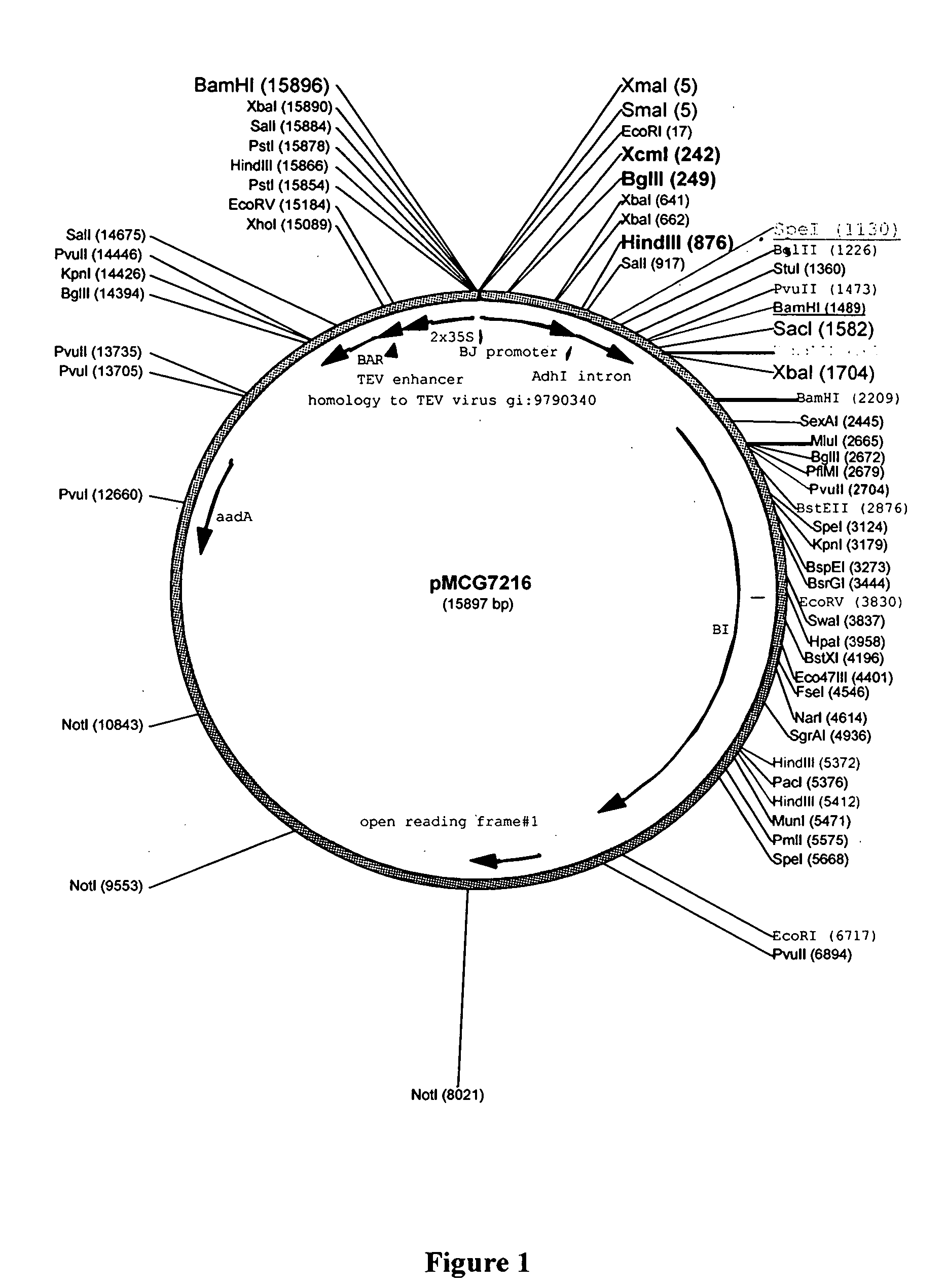Plant biosensor systems
a biosensor and plant technology, applied in the field of plant biosensor systems, can solve the problems of increasing the possibility of endangering wildlife or ecosystems not initially affected, increasing the cost of techniques, and not being suitable for continuous field monitoring, so as to achieve rapid, cost-effective and accurate detection.
- Summary
- Abstract
- Description
- Claims
- Application Information
AI Technical Summary
Benefits of technology
Problems solved by technology
Method used
Image
Examples
example 1
Transgenic Plants For the Detection of Volatile Organic Compounds
[0128] The experiments described herein are designed to determine the feasibility of using plant biomarkers to detect volatile organic compounds (VOCs) such as benzene and formaldehyde. First, all of the approximately 25,000 genes of a well-characterized laboratory plant, Arabidopsis thaliana, are screened to identify those genes that are up-regulated by benzene and formaldehyde.
Identification of Arabidopsis Genes up-regulated by Benzel ne and Forinaldehyde
[0129]Arabidopsis thaliana plants are exposed for either one hour or twenty-four hours to benzene and formaldehyde at a high dose (equilibrium concentration at saturation, i.e., at its vapor pressure) in an isolated chamber where the concentration of VOC can be measured. Leaf tissues are then harvested after exposure to VOC. Total RNA from these tissues is isolated and used to analyze the level of mRNA in each treated sample. An Affymetric whole genome Arabidopsi...
example 2
Identification of Genes Up-Regulated by Heavy Metals
[0140] This example describes the use of plant biomarkers to detect heavy metals. For such plant biosensors to be developed, it is important first to identify active metal responsive promoter elements in a plant suitable for use in monitoring systems. In a first step, all of the approximately 25,000 genes of a well-characterized laboratory plant, Arabidopsis thaliana, are screened to identify those genes that are up-regulated by heavy metals.
Identification of Arabidopsis Genes up-regulated by Heavy Metals
[0141]Arabidopsis thaliana plants are exposed to different heavy metals, such as arsenic, cadmium, chromium, copper, nickel, mercury, lead, selenium, and zinc. Leaf tissues are then harvested after exposure to heavy metals. Total RNA from these tissues is isolated and used to analyze the level of mRNA in each treated sample. An Affymetric whole genome Arabidopsis micro-array chip, which contains about 25,000 Arabidopsis genes, ...
example 3
Generation of Transgenic Plants for Heavy Metal Detection
[0150] This Example and the following one make use of BjMTP (Brassica juncea Metal Tolerance Protein), which has recently been cloned from Indian mustard (B. juncea) seedlings. This gene is thought to be involved in the vacuolar compartmentalization of various metal ions (M. Persans and D. E. Salt, Biotech. Gen. Eng. Rev. 2001, 17: 385-409). Northern analysis revealed that the steady-state expression levels of BjMTP mRNA increases on exposure of Indian mustard seedlings to water containing cadmium (1 μM), nickel (25 μM), or zinc (25 μM). To account for this regulation, it is proposed that the promoter associated with BjMTP contains metal responsive elements (MRE) involved in metal-regulated expression of BjMTP. If the metal regulated expression of BjMTP could be used to regulate expression of a visible feature in plant tissue, such as the B transcription factor that induces anthocyanin synthesis, this metal responsive element...
PUM
| Property | Measurement | Unit |
|---|---|---|
| Color | aaaaa | aaaaa |
| Concentration | aaaaa | aaaaa |
| Area | aaaaa | aaaaa |
Abstract
Description
Claims
Application Information
 Login to View More
Login to View More - R&D
- Intellectual Property
- Life Sciences
- Materials
- Tech Scout
- Unparalleled Data Quality
- Higher Quality Content
- 60% Fewer Hallucinations
Browse by: Latest US Patents, China's latest patents, Technical Efficacy Thesaurus, Application Domain, Technology Topic, Popular Technical Reports.
© 2025 PatSnap. All rights reserved.Legal|Privacy policy|Modern Slavery Act Transparency Statement|Sitemap|About US| Contact US: help@patsnap.com

